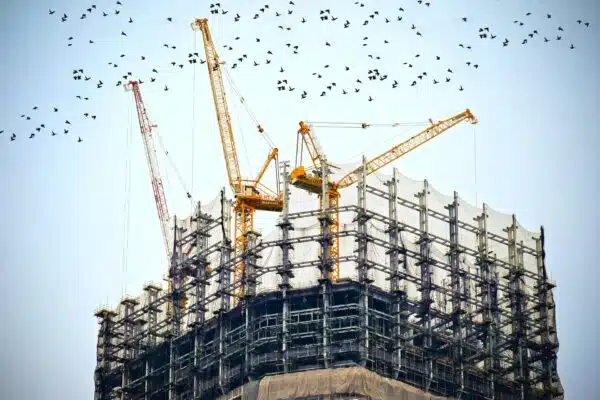Embodied Carbon Assessment
Embodied carbon is the carbon footprint of a material. It considers how many greenhouse gases (GHGs) are released throughout the supply chain and is often measured from cradle to (factory) gate, or cradle to site (of use). Embodied carbon may also be measured with the boundaries of cradle to grave, which is the most complete boundary condition. This boundary includes the extraction of materials from the ground, transport, refining, processing, assembly, in-use (of the product) and finally its end of life profile.
Embodied carbon is gaining increasing attention from both industry and government where it is now recognised that embodied carbon emissions make up a large fraction of the emissions from the construction sector. In fact, it is often 20-50% of the whole life (embodied + operational) carbon emissions of a new building. This is already a significant proportion and will only increase as the thermal standards of new buildings improve.
It is also an important part of true Net Zero Carbon buildings and construction projects. For example, it is included in the UK-GBC Net Zero Carbon Framework definition.
Unless the embodied carbon footprint is included in the definition of net zero, it risks neglecting a large amount of upfront carbon emissions.
What is Embodied Carbon?
The measurement of embodied energy and carbon for a building material or a construction project starts at ‘The Cradle’, which is the earth.
This journey is shown visually in the presentation slides below:
It is also important to remember that unlike operational carbon emissions the embodied energy and carbon cannot be reversed. Once they have been released the opportunity for improvement has passed. In contrast, operational emissions can be improved at any point in the lifetime of a building, for example by implementing a range of energy efficiency measures.
The importance of embodied carbon is therefore becoming clear and it can easily be reduced by 10-20% without increasing capital costs.
Embodied energy and carbon assessments often include:
- Streamlined building embodied carbon assessment for planning statements
- Embodied carbon reduction advice through design
- Detailed embodied carbon assessment of whole buildings and construction assets
- Embodied carbon assessment of products
- Embodied carbon training workshops and seminars. We have an online embodied energy and carbon training course
Embodied Carbon Standards and Methods
There are now many important standards for embodied carbon assessment of buildings and construction. These include:
- EN 15978 – Sustainability assessment of construction works
- EN 15804 – Environmental Product Declarations. This standard is the product level standard that feeds into the above building level standard, EN 15978
- PAS 2080 – Carbon management of infrastructure works
- RICS Whole Life Carbon Assessment for the Built Environment
Please use the form below if you would like to reach out to us regarding these services.
Essential Carbon Footprint Training Course Updated
Circular Ecology have recently completed updating their Essential Carbon Footprint Training Course. The e-learning course [...]
Apr
Hiring – Senior Sustainability Consultant
Join Circular Ecology. An opportunity is available for an enthusiastic and dedicated sustainability professional at [...]
Feb
Have a Very Green Christmas
For many people, Christmas is a time of joy and celebration, for sharing gifts and [...]
Dec
Circular Ecology Support the Launch of the Built Environment Carbon Database (BECD)
The Built Environment Carbon Database (BECD) is envisioned to become the main source of carbon [...]
Oct




